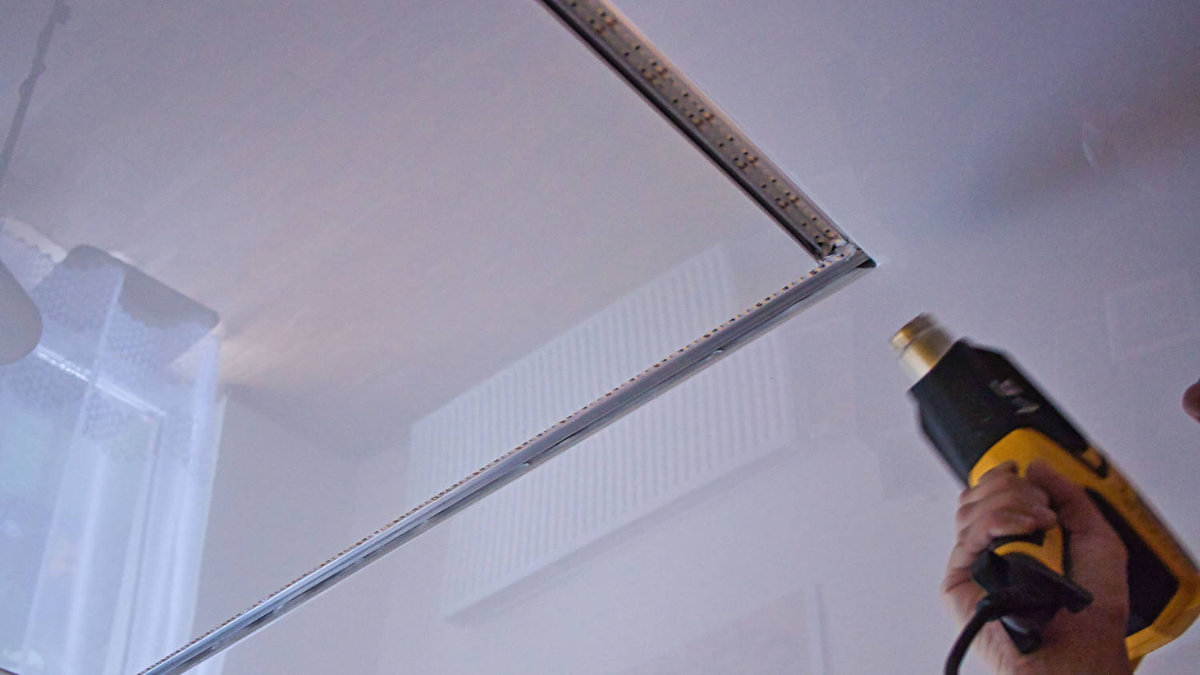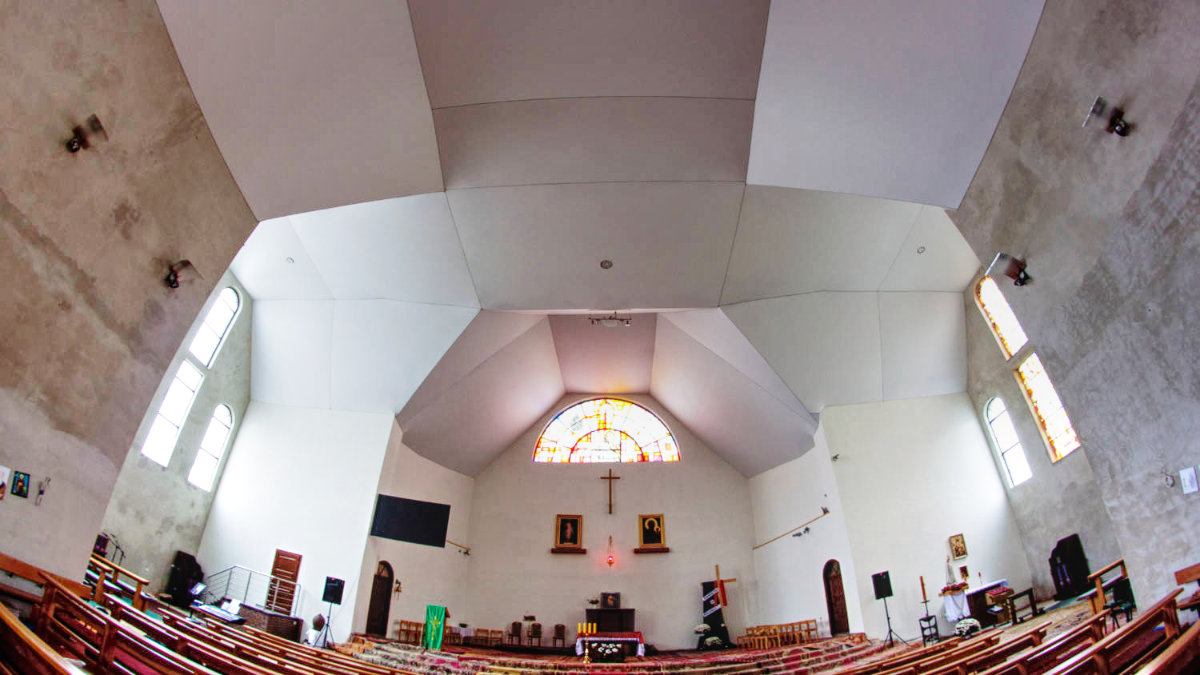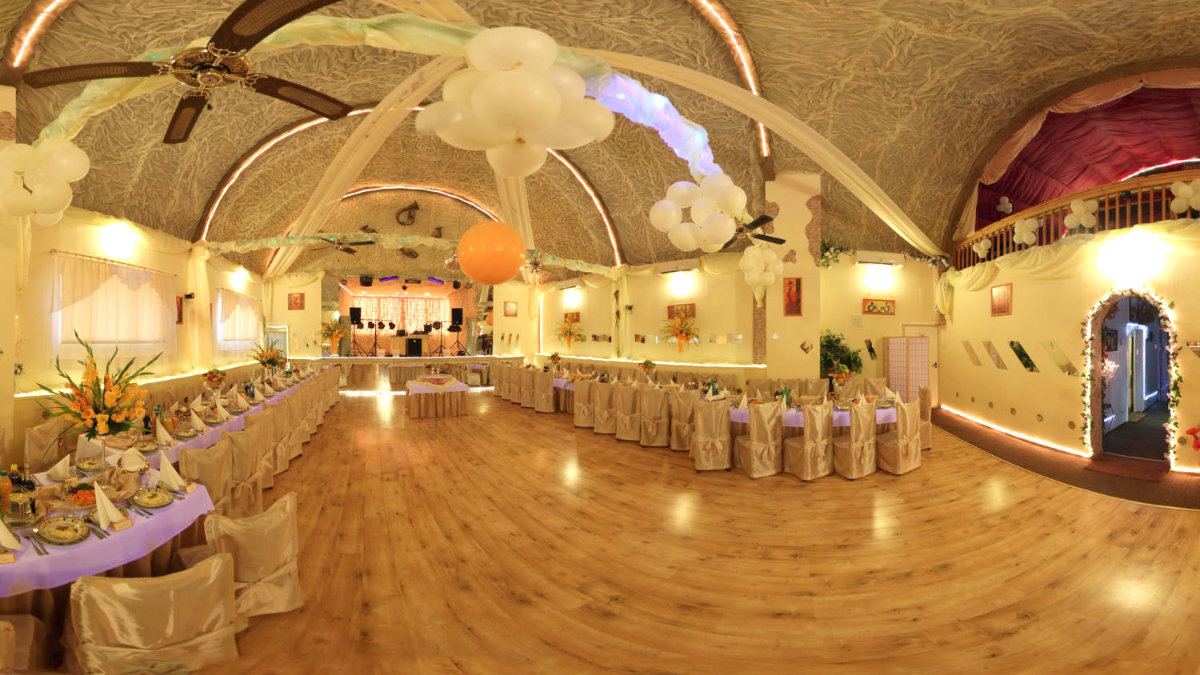The stretch ceiling made of fabrics and PVC foil differs visually as well as the method of assembly. Interestingly, the key difference is at the very end of the stretch ceiling installation. This is both a facilitation and a challenge for the contractor, because it is him and not the manufacturer who adjusts the fabric to the installation site.
If the manufacturer makes a mistake and the PVC stretch ceiling comes too small (its stretching limit exceeds 10%), it can be thrown away, while a too large ceiling can be shortened, but it must be done by the manufacturer and this may affect its quality and warranty. A stretch ceiling made of fabrics does not cause this problem – the material will never run out, because it comes to much more than the net dimension of the ceiling surface. This means that even small and difficult elements to be made on the harpoon are easy to make when working with the fabric.
5 main differences in the installation of a stretch ceiling made of PVC foil and fabrics
1. Mounting profiles

Stretch ceilings made of PVC foil are most often mounted on aluminum profiles screwed to the ceiling or wall with dowels. Manufacturers place great emphasis on the correct joining of them in the corners, which in the case of foil should only have cuts, allowing them to be folded in one piece in the corner. Fabrics are mounted on plastic profiles, which, unlike aluminum profiles, are cut at the corners like skirting boards. Different mounting profiles also mean different spatulas for inserting the material and they are not interchangeable. The very way of using them is also definitely different – the foil is pulled and inserted into the profile, and the fabric is “kneaded” in the profile.
2. Cutting the assembly profiles

Not only the place of cutting the profile but also the way it is done is different. With aluminum profiles for PVC foil, you need to use a saw: a hand saw for thin profiles or a miter saw for thicker profiles. This means that sometimes the contractor cuts the profiles at the right angle in advance so as not to dirty the customer’s room with metal filings. For plastic profiles for fabrics, metal scissors are enough, which are easy to cut into plastic. This significantly speeds up the assembly process itself.
In addition, there is also a solution to insert a special silicone insert into the aluminum profile for PVC foil and use it to attach the fabric. Unfortunately, it only works one way – you can’t mount PVC foil to fabric profiles.
3. Fabric stretch ceiling – tacker assembly (stapler)

With aluminum profiles, it is necessary to drill holes, insert pins and screw the strip. Installation of plastic profiles for fabrics is faster – just use the appropriate pressure taker and attach the skirting board directly to the wall with the appropriate pins. Sometimes the project requires adding an additional distance and then square timber should be used to which the profiles are just attached.
4. Heating up

An absolutely necessary element of the installation of a stretch ceiling made of PVC foil is heating the plastic with a heater. Under no circumstances can you skip this stage, because the foil will not stretch and will not allow it to be installed in previously prepared profiles. This stage can also cause problems – uneven spreading of the coating or even its overheating. When installing a fabric stretch ceiling, the heater is not used at all, because nothing heats up.
5. Stretch ceiling made of fabrics and PVC foil – cutting versus complaints

No need to heat fabrics is an obvious plus of installing a stretch ceiling, but you still need to get rid of excess fabric. For comparison, with PVC foil, the ceiling is finished with a special harpoon. It should fit in the mounting profile without leaving any wrinkles. Every experienced ceiling contractor knows that a perfectly matched foil is just a dream and it often happens that some dimension is not perfect and something needs to be done about it…? Usually this means reworking the foil to fit – if there is time, it is at the producer’s, but if there is no time, it is done by yourself. Who glued the harpoon at the client knows what’s going on… With fabric, this problem does not exist, because there is always more fabric and only after installing it, we remove its excess.

In both cases, we can remove / detach a piece of the ceiling and reattach it – of course, such an operation is best entrusted to a specialist.
Summary
What ultimately wins? In terms of the pace of assembly, a stretch ceiling made of PVC foil will be installed a little faster – provided that each fragment fits perfectly. If not, and corrections are necessary – a fabric stretch ceiling comes to the fore. At the same time, with larger coatings, the drill/taker will lose to drilling dowel holes. Of course, we’re talking about minutes/hours of difference, not days as is the case with plasterboard or Armstrong ceilings.



